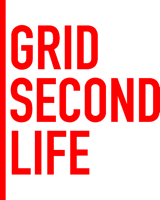WHY A NEW GRID FOR CIAM 2019
The 1949 CIAM Grid was functional to measure the adherence of the projects presented to the principles of the 1933 Athens Charter, and therefore to critically measure them.
Today, after 70 years, the conditions of design practice have radically changed: if in 1949 the goal was to plan the “city of the future” according to the dictates of the Athens Charter and in the climate of post-war reconstruction, today the social, economic, and political conditions have radically changed, in a fragmented professional horizon.
Furthermore, the today need for sensitivity and responsibility, with respect to sustainable development, is increasingly present in the profession.
For us this means that the new paradigm of today is that of the urban regeneration and refurbishment of existing buildings, as an alternative to the demolition and reconstruction process, a paradigm that often forces designers to act in new ways of intervening.
Today, after 70 years, our proposal is to develop a new Grid, which will lives in the form of an interactive website, in which projects can be measured, analysed, classified.
So the function of this new Grid is not to measure the adherence of a building to a manifesto or to a programmatic and coherent list, but to allow the evaluation of both the choices and the design outcomes, according to the paradigm of the refurbishment and reuse; the new Grid divides to then reconstitute the unity of the project, does not propose or pursue a theoretical algorithm but analyses the conditions of possibility of the project and their consequences in function on the existing, including the social and economic conditions, the natural and the geographic, the anthropological and the cultural.
The new Grid, therefore, proposes to measure the variation, from the total maintenance to the total transformation, of the categories into the project is divided, for the purpose of its possible objective description.
The categories are:
WHAT (about program and function),
WHO (about who makes the intervention possible, such as property and/or financing),
HOW MUCH (about relative and absolute dimensions),
HOW (or the design strategy: about image, material and structure).
The new Grid, then:
- proposes a structural interpretation of the recurring topics and themes in the redevelopment issues;
- like the CIAM grid, pursues and proposes for each project: analysis, synthesis, presentation, reading;
- strength until the crisis, the concepts of modification/transformation and their dialectics, the form/content relationship, the value of adaptation (up to mimesis) or contrast to the existing, the dimension of oblivion and memory, the formal, material, structural and image values in the design strategy;
- allows, even today, the formulation of the (not only architectural) question: how do architects act in the general framework of sustainable development?
- indicates some possible ways to pursue the “city of the future” according to requalification and reuse;
- allows the sharing and public understanding of design solutions;
- allows specialists to carry out both analytical and synthetical assessments of the local/global issues addressed, and possibly resolved, in the building;
- indicates the role of the discipline and of the professional organizations in defining the issues to be addressed in cases of refurbishment and reuse;
- analytically defines both the general conditions and the specific differences in the refurbishment and reuse interventions, defining them both by affinity and by differences.
The new Grid, therefore, allows to break down and analyse the reuse of existing buildings so as to allow a reading as objective as possible; each architect will also be invited to upload images and critical texts, so that the result will not be a succession of images, but rather of short illustrated critical texts.
